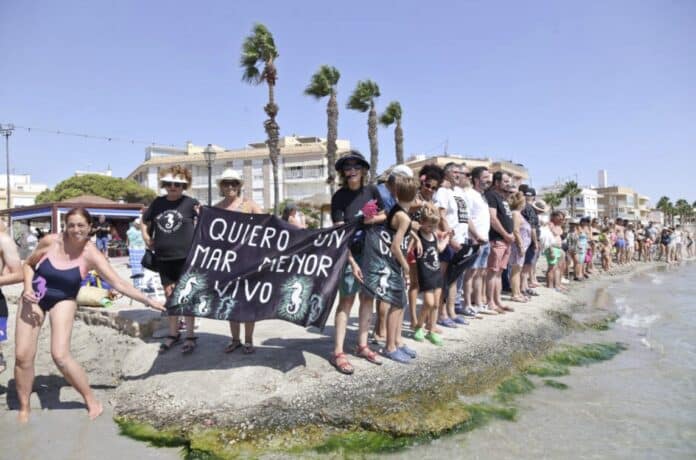Hundreds of people joined in a human chain on Saturday to carry out a symbolic embrace of the Mar Menor, which this year was included in the ‘ Hug of water ‘. The participants were representing over 150 organisations and protest groups.
There are still many problems with the conservation of this aquatic ecosystems, which continues to be a cause for great concern. Although, for the moment, the images of dead fish on the shores of the salt lagoon are a thing of the past, civil society is keeping a close watch to ensure that no backward steps are taken that could bring these images back to the fore.
For the fourth consecutive year, the ‘Abrazo al Mar Menor’ was held, a human chain along the salt lagoon that once again demanded the need to care for this ecosystem in the Region of Murcia. The movement was extended to over 70 additional locations “where there are similar problems with the conservation of aquatic ecosystems, or who wanted to participate in preserving their environment now that it is still healthy”.
The organisers of the human chain explain that the ‘Embrace the Mar Menor’ goes far beyond the problem of the lagoon. “We must put limits on human action in ecosystems. Everyone needs to slow down a bit and take better care of our environment.
Although it is better than four years ago, the Mar Menor is still in a critical condition, according to the social movements involved in the lagoon. “It is better than four years ago, but it could not be worse, which is clearly no consolation. The water quality is not good and the risk of anoxia still exists,” explains Jesús Cutillas, one of the spokespersons.
He went on to say, “With this embrace that is born from our concern, we want to shout out to everybody that we must stop the discharge of polluting substances into rivers, seas, oceans and aquifers, as well as the overexploitation of these aquatic resources. We must stop the expansion of the agricultural frontier, remove polluting mining, reverse the large-scale property that does not care for nature, preserve and restore the sources of rivers. It is also necessary to demand adequate investment of state budgets to protect and guarantee the rights of water and nature, and to enact and enforce laws that care for the vital cycle of water. Let us never forget that there is no life anywhere without it”.





